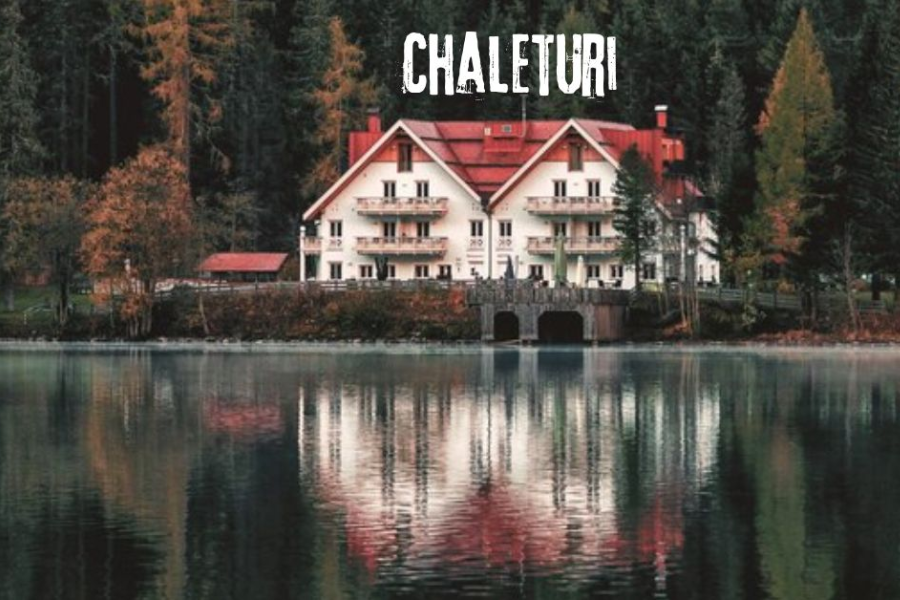Introduction
Chaleturi have captured the imagination of many due to their unique charm and rustic beauty. Originally built as seasonal farmhouses for dairy cows in the Swiss Alps, these iconic homes are known for their sturdy wooden frames, wide overhanging roofs, and picturesque locations. As the world grew more interconnected, chaleturi evolved from humble agricultural dwellings to symbols of luxury and mountain retreats worldwide. Today, chaleturi can be found in many regions, including Europe, North America, and other places where the natural beauty and rustic aesthetics are cherished. This article takes an in-depth look at the architectural essence, design considerations, and modern versatility of chaleturi, explaining why they remain so popular.
The Architecture of Chaleturi
Chaleturi are defined by specific architectural features that are both functional and visually appealing. A classic chalet typically includes a steeply pitched roof, designed to allow snow to slide off easily and prevent potential damage from accumulation. This roof extends into wide eaves, shielding the walls from harsh weather while creating sheltered outdoor areas. Large windows are another essential feature, allowing plenty of natural light to flood the interiors and offering stunning views of the surrounding landscape. The use of exposed wooden beams and timber cladding reinforces the rustic charm that is characteristic of chalets.
Although these traits are common to most traditional chaleturi, regional variations do exist. For example, chalets in the Alps often feature ornate carvings and balconies, while those in North America may incorporate stone materials and offer more expansive interior spaces for year-round living. Despite these differences, the central appeal of chaleturi—a seamless integration of nature and architecture—remains unchanged, making them a popular choice in scenic locations all around the globe.
Key Considerations for Building Your Chalet
Building your own chalet is an exciting project, but it requires careful thought and preparation. One of the most important factors to consider is the location. Ideally, a chalet should blend harmoniously with its surroundings, providing both privacy and breathtaking views. In terms of materials, durability is critical. Weather-resistant wood such as cedar or spruce is commonly used for its strength and natural insulation properties. Modern construction technologies can address traditional challenges, such as insulation and heating. Innovations like underfloor heating systems and energy-efficient windows can ensure that the chalet remains comfortable throughout the year, while still preserving its traditional character.
Interior Design Elements for Chaleturi
Inside a chalet, the design continues to emphasize a connection with nature. Open-plan layouts create expansive, communal spaces, making chalets ideal for family gatherings and entertaining guests. Natural materials such as wood, stone, and wool not only enhance the rustic ambiance but also improve the home’s insulation. A central fireplace often serves as the focal point in the living area, providing warmth and a cozy atmosphere.
When decorating the interior of a chalet, it’s important to strike a balance between rustic charm and modern convenience. Traditional furniture can be complemented with contemporary touches to make the space both inviting and functional. Incorporating local crafts and art can add a personal, authentic touch, while modern fixtures ensure that the chalet provides all the comforts expected from a modern home.
Versatility and Uses of Chaleturi
The versatility of chaleturi makes them suitable for a range of purposes. As vacation homes, they offer an ideal retreat from the hustle and bustle of city life, allowing owners to immerse themselves in nature, whether by skiing in the winter or hiking in the summer months. Additionally, many people choose to make chaleturi their primary residence, adapting them for year-round living. The increasing popularity of vacation rentals has also led many chalet owners to convert their properties into profitable ventures, catering to the high demand for luxurious, authentic accommodations.
Key Facts
Origins: Chaleturi originated in the Swiss Alps, initially as seasonal farmhouses used by dairy farmers to house cattle during the warmer months.
Distinctive Features: Chaleturi are known for their sloped, overhanging roofs that help shed snow, large windows to capture scenic views, and exposed wooden beams. These design elements combine both functional and aesthetic purposes.
Wooden Construction: The primary material used in traditional chaleturi is wood, especially weather-resistant types like cedar or spruce, which provide natural insulation and durability.
Adaptation to Climate: Traditionally designed to withstand snowy conditions, chaleturi’s architecture is ideal for regions with heavy snowfall. The steep roofs help prevent snow accumulation, while the large eaves protect the walls from water and snow damage.
Global Popularity: While their origins are in Switzerland, chaleturi have spread globally, particularly in mountainous areas in Europe, North America, and parts of Asia, where they are valued for their rustic beauty and adaptability.
Modern Luxury: Over time, chaleturi have evolved from their simple, agricultural roots into luxurious, year-round residences. Today, they often feature modern amenities like underfloor heating, triple-glazed windows, and high-end interior finishes.
Versatility: Chaleturi can serve as vacation homes, primary residences, or rental properties. Their versatility makes them ideal for a variety of uses, from personal retreats to profitable vacation rentals in scenic locales.
Interior Design: The interior design of chaleturi celebrates natural materials like wood, stone, and wool, creating a warm, cozy atmosphere. Open floor plans are common, making them perfect for family gatherings and entertaining.
Sustainability: Many modern chaleturi incorporate eco-friendly practices, such as energy-efficient heating systems, renewable energy sources like solar panels, and sustainable building materials.
Cultural Symbolism: In many Alpine regions, chaleturi are symbolic of a connection to nature, craftsmanship, and a slower, simpler way of life, reflecting an idealized version of rural living.
Conclusion
The enduring appeal of chaleturi lies in their perfect combination of practicality, beauty, and harmony with nature. While architectural trends and technologies have evolved over the years, the chalet has remained adaptable, retaining its traditional charm while meeting modern needs. Whether as a personal retreat or an investment property, a chalet offers an enticing blend of luxury, comfort, and a simpler way of life.
Frequently Asked Questions
- What distinguishes a chalet from a cabin?
While both structures are typically found in mountain or forested areas, chalets are generally larger, with steeper roofs designed to handle heavy snowfall. Cabins are usually smaller, simpler buildings made from logs.
- What is the cost to build a chalet?
The cost of building a chalet can vary significantly depending on factors like location, materials, and size. On average, building a chalet may cost between $200 to $500 per square foot.
- Can a chalet be built in a region without snow?
Although traditional chalets are designed for snowy climates, their design and functionality can be adapted to any location, providing a rustic yet comfortable living space.
- Where can I find authentic chalet designs?
Switzerland, Austria, and France are some of the best places to find traditional chalet designs, with each country offering its own unique take on this iconic style of architecture.
- How can I make my chalet more energy-efficient?
To increase a chalet’s energy efficiency, consider using modern insulation methods, installing energy-efficient windows, and incorporating renewable energy sources, such as solar panels. These upgrades can significantly improve sustainability without compromising the chalet’s rustic charm.
Stay in touch to get more updates & alerts on Live Hint! Thank you



